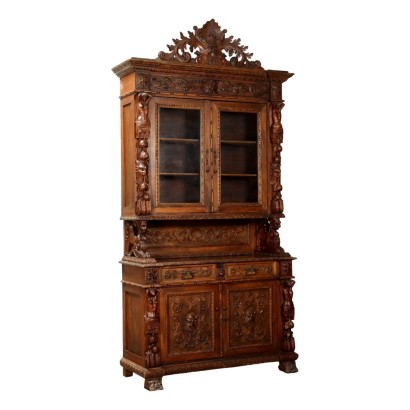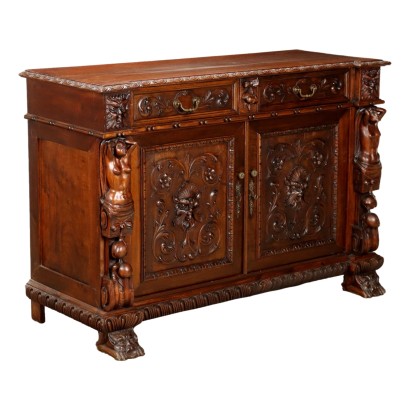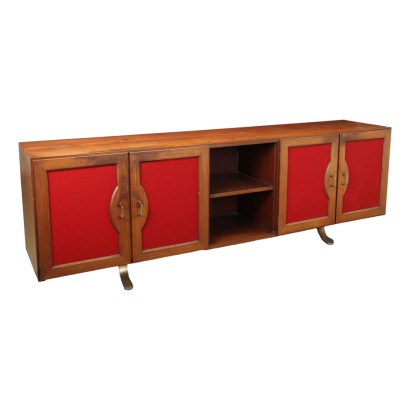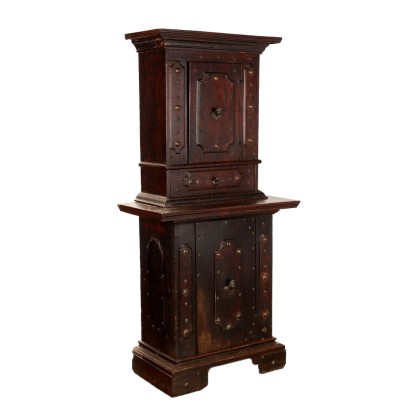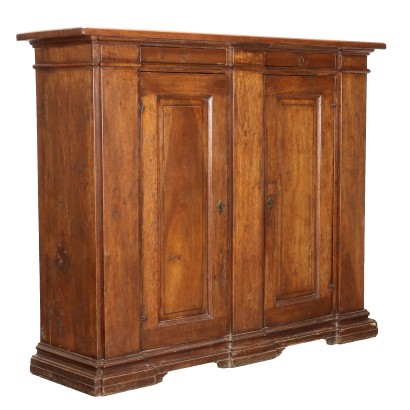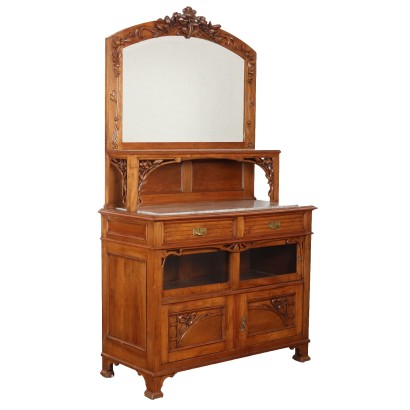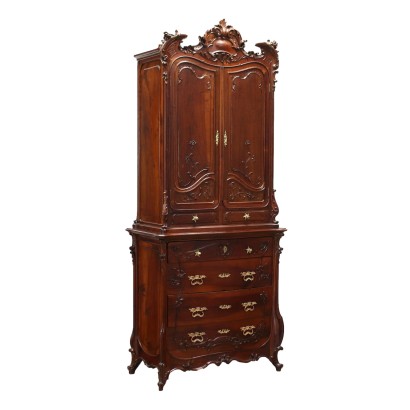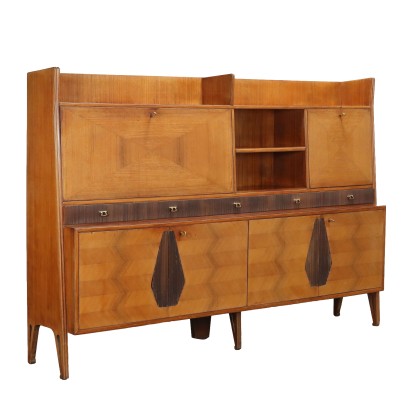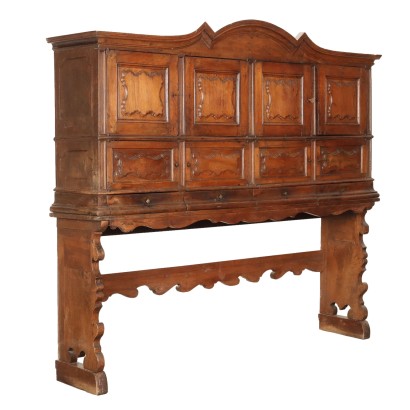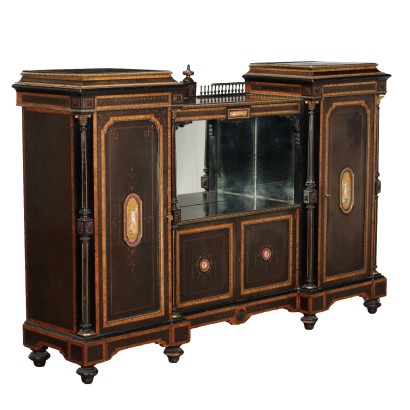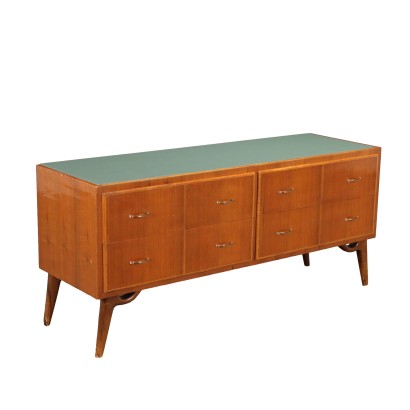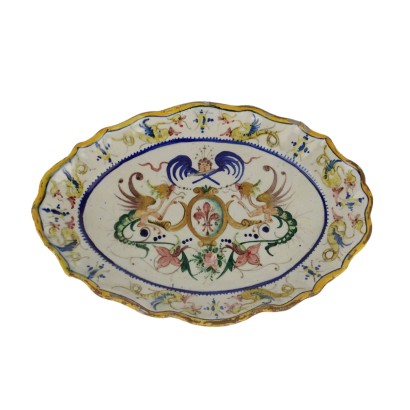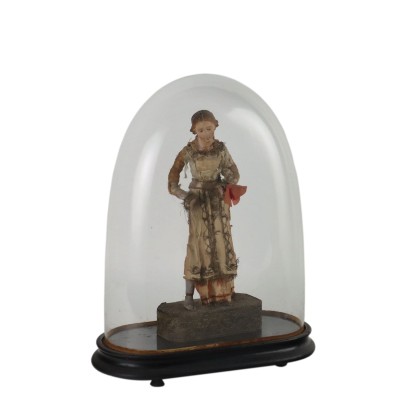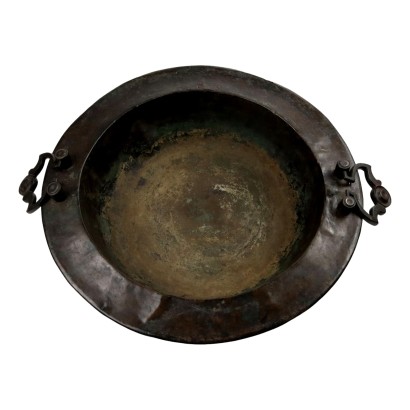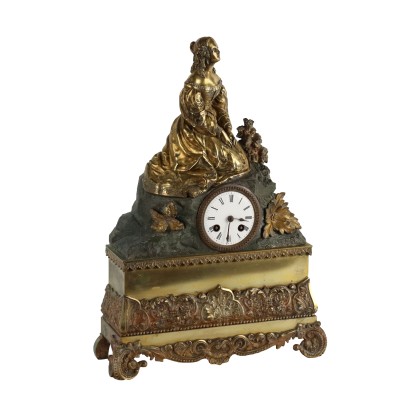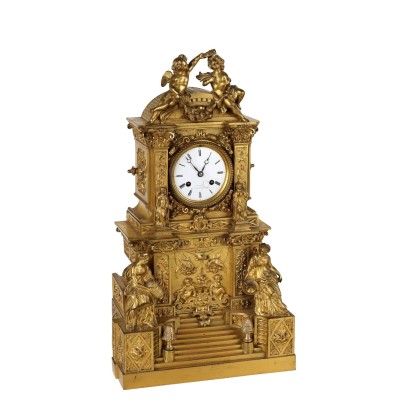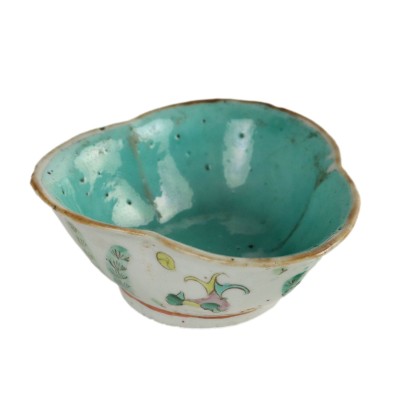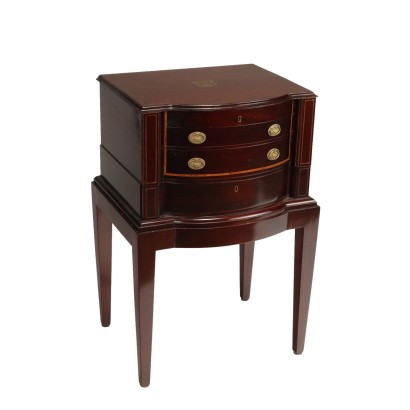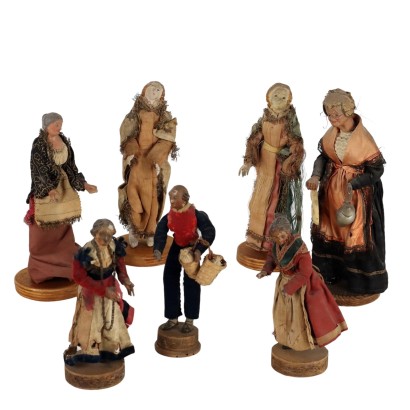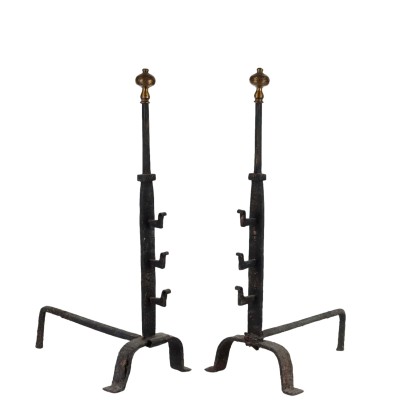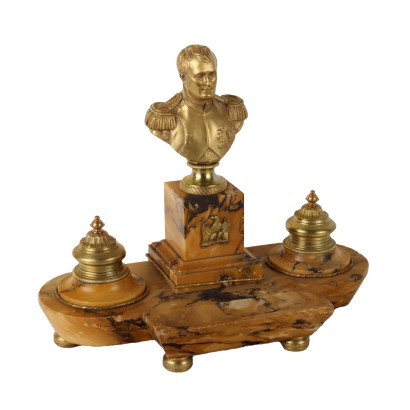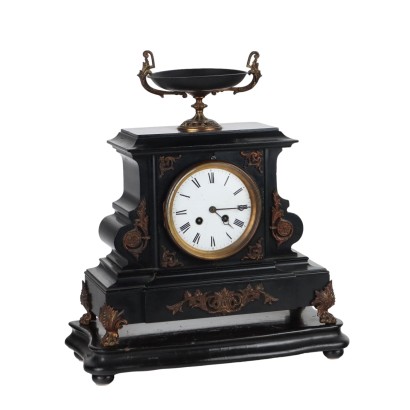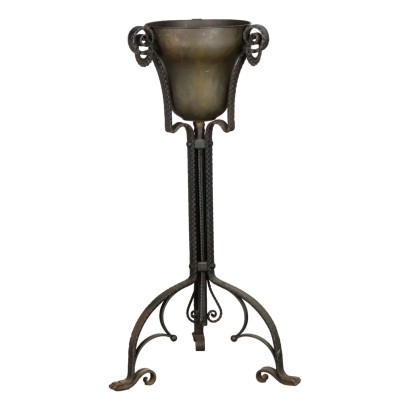Antique Neo-Renaissance Cupboard Double Top Walnut '900 - Italy, Late XIX Century
Features
Italy, Late XIX Century
Style: Neo-Renaissance (1820-1890)
Age: 19th Century / 1801 - 1900
Origin: Italy
Main essence: Swiss Pine , Walnut
Description
Neo-Renaissance cupboard supported by feet carved like a mask, on the front it has a pair of doors framed between uprights carved like a caryatid, to support the band under the top in which there are two drawers. The upper body is supported by shelves carved with monstrous animals and also has two doors, here with glass, framed between festooned uprights and with caryatids, to support the upper band carved with characteristic phytomorphic motifs and a cymatium with a central grotesque mask from which leafy motifs branch out. In walnut, the carvings of the uprights are in pine.
Product Condition:
Product which due to age and wear requires restoration and re-polishing. We try to present the real state of the furniture as completely as possible with photos. If some details are not clear from the photos, what is stated in the description applies.
Dimensions (cm):
Height: 305
Width: 157
Depth: 62
Additional Information
Style: Neo-Renaissance (1820-1890)
Nineteenth-century revival and revaluation of forms and stylistic features typical of the Renaissance.Find out more with the insights of our blog:
Classic Monday: a neo-Renaissance sideboard in dialogue with the past
The dictionary of antiques - Savonarola
INSERT ADDITIONAL LINKS
The Austrian taste of Baroque
Antiques and the history of collecting
Collecting in the 20th century
Age: 19th Century / 1801 - 1900
19th Century / 1801 - 1900Main essence:
Swiss Pine
The word Cirmolo originates in the Lombard dialects and indicates the wood produced by the pine, a conifer that grows in the Alps above 1600 meters. It is a reddish wood with peculiar knots. It is a soft wood, used for carvings or rustic furniture or for the lacquered furniture of Venetian furniture makers.Walnut
Walnut wood comes from the plant whose botanical name is juglans regia , probably originally from the East but very common in Europe. Light or dark brown in color, it is a hard wood with a beautiful grain, widely used in antique furniture. It was the main essence in Italy throughout the Renaissance and later had a good diffusion in Europe, especially in England, until the advent of mahogany. It was used for solid wood furniture and sometimes carvings and inlays, its only big limitation is that it suffers a lot from woodworm. In France it was widely used more than anything else in the provinces. In the second half of the eighteenth century its use decreased significantly because mahogany and other exotic woods were preferred.Other customers have searched:
Credenza, mobile da cucina, armadio, stipo, dispensa, madia..
Ecco qualche spunto dal nostro blog e da FineArt per scoprire di più sul tema credenze:
Leggi di più
Una credenza che dialoga con il passato
Credenza doppio corpo, tesoro di intagli e decorazioni
Piccolo stipo, grande arredo
Stipo toscano a cavallo tra XVI e XVII
Credenza Barium di Luciano Frigerio
Credenza, Mathieu Befort Jeune, Parigi, terzo quarto XIX secolo
Mobile anni '60
Highboard '503' Gianfranco Frattini per Bernini
Mobile bar anni '40
Mobile Bar anni '40 '50, manifattura italiana
Sull'antiquariato in generale dai un'occhiata anche a:
Classic Monday: da un pezzo dei nostri magazzini alla storia dell'antiquariato
L'antiquariato dalla A alla Z: il Dizionario dell'Antiquariato
Il dizionario dell'antiquariato - Lastronatura
Il dizionario dell'antiquariato - Mascherone
Il dizionario dell'antiquariato - Natura morta
Il dizionario dell'antiquariato - Opificio
Il dizionario dell'antiquariato - Pastiglia
Il dizionario dell'antiquariato - Savonarola
Il dizionario dell'antiquariato - Rosone
Leggi di più
Una credenza che dialoga con il passatoCredenza doppio corpo, tesoro di intagli e decorazioni
Piccolo stipo, grande arredo
Stipo toscano a cavallo tra XVI e XVII
Credenza Barium di Luciano Frigerio
Credenza, Mathieu Befort Jeune, Parigi, terzo quarto XIX secolo
Mobile anni '60
Highboard '503' Gianfranco Frattini per Bernini
Mobile bar anni '40
Mobile Bar anni '40 '50, manifattura italiana
Sull'antiquariato in generale dai un'occhiata anche a:
Classic Monday: da un pezzo dei nostri magazzini alla storia dell'antiquariato
L'antiquariato dalla A alla Z: il Dizionario dell'Antiquariato
Il dizionario dell'antiquariato - Lastronatura
Il dizionario dell'antiquariato - Mascherone
Il dizionario dell'antiquariato - Natura morta
Il dizionario dell'antiquariato - Opificio
Il dizionario dell'antiquariato - Pastiglia
Il dizionario dell'antiquariato - Savonarola
Il dizionario dell'antiquariato - Rosone

